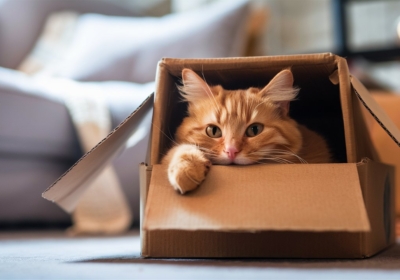Ever watched your cat lounge around all day and wished they had a bit more pep in their step? Transforming your couch potato into a feline athlete might seem like a daunting task, but with cat agility training, it’s not only possible but also incredibly rewarding. Agility training offers a plethora of benefits, from improved physical health to enhanced mental stimulation, all while strengthening the bond between you and your furry friend. In this article, we’ll dive into the myriad benefits of cat agility training and provide you with a comprehensive guide to getting started. Whether you’re looking to boost your cat’s health, alleviate boredom, or simply have fun, this guide will set you on the path to success.
Table of Contents
Understanding Cat Agility Training
Cat agility training involves guiding your cat through a series of obstacles such as tunnels, jumps, and weave poles, similar to the courses used in dog agility. While it might sound unusual, cats are natural athletes, capable of impressive feats of agility and speed. Unfortunately, common misconceptions suggest that cats are too independent or untrainable for such activities. However, with patience and the right approach, cats can excel in agility training, showcasing their incredible physical capabilities and enjoying the mental challenge.
Health Benefits of Cat Agility Training
Physical Health Improvements
Agility training provides a full-body workout that helps keep your cat in top physical condition. Regular exercise aids in weight management, which is crucial for preventing obesity-related issues like diabetes and arthritis. The varied movements involved in agility training—such as jumping, climbing, and weaving—help increase muscle tone and strength, ensuring your cat remains agile and strong. Additionally, these activities enhance cardiovascular health, promoting better overall fitness.
Mental Health Benefits
Mental stimulation is just as important as physical exercise for cats. Agility training offers a way to reduce stress and anxiety by providing an outlet for pent-up energy. It also combats boredom, a common issue for indoor cats, by engaging their minds and encouraging problem-solving. Furthermore, agility training taps into their natural hunting instincts, providing a satisfying and enriching experience that mimics the challenges they would face in the wild.
Bonding and Socialization
Agility training is not only beneficial for your cat’s health but also strengthens the bond between you and your pet. The time spent training and playing together fosters trust and improves communication, enhancing your overall relationship. If you have multiple cats, agility training can also serve as a socialization tool, helping them interact and play together in a structured environment. This collaborative effort builds a sense of teamwork and camaraderie, making the training sessions enjoyable for everyone involved.
Getting Started with Cat Agility Training
Basic Equipment Needed
To start agility training, you’ll need some basic equipment:
- Tunnels: Encourages your cat to crawl and navigate enclosed spaces.
- Jumps: Helps develop their jumping ability and coordination.
- Weave Poles: Enhances their agility and directional control.
You can purchase agility kits online or create DIY versions using household items like boxes, broomsticks, and chairs.
Creating a Safe Training Environment
Ensure the training area is safe and free from hazards. A spacious room or a secured backyard works well. Make sure the ground is non-slip and all obstacles are stable to prevent accidents.
Initial Steps and Simple Exercises
Begin with simple exercises to familiarize your cat with the equipment. Start with a single jump or a short tunnel, gradually increasing the complexity as your cat gains confidence. Use treats and positive reinforcement to encourage participation and create a positive association with the training.
Training Techniques and Tips
Positive Reinforcement and Rewards
Cats respond well to positive reinforcement. Use treats, praise, and petting to reward your cat for completing obstacles or making progress. Consistency is key—always reward immediately after a successful action to reinforce the behavior.
Gradual Progression and Patience
Agility training should be a fun and stress-free activity. Progress gradually, allowing your cat to master one obstacle before introducing another. Patience is essential; avoid pushing your cat too hard or too fast, as this can lead to frustration and disinterest.
Observing and Adapting to Your Cat’s Preferences
Every cat is unique. Observe your cat’s reactions and adapt the training to suit their preferences. Some cats may prefer tunnels over jumps, while others might enjoy weaving through poles. Tailor the training sessions to keep your cat engaged and motivated.
Common Challenges and Solutions
Addressing Fear or Reluctance
Some cats may be hesitant or fearful initially. Use gentle encouragement and never force your cat to participate. Start with low-stress activities and gradually introduce more challenging obstacles as their confidence builds.
Avoiding Overtraining and Recognizing Fatigue
Pay attention to your cat’s energy levels and avoid overtraining. Short, frequent sessions are more effective than long, exhausting ones. Look for signs of fatigue, such as panting or reluctance, and allow your cat to rest when needed.
Tailoring Training to Individual Cat Personalities
Recognize that each cat has its own personality and pace of learning. Some may take to agility training quickly, while others need more time. Be flexible and adjust your approach to fit your cat’s unique needs and temperament.
Maintaining Motivation and Progress
Setting Achievable Goals
Set small, achievable goals to keep the training sessions rewarding. Celebrate each milestone, whether it’s mastering a new obstacle or completing a course faster.
Keeping Training Sessions Fun and Engaging
Variety is key to maintaining interest. Mix up the obstacles and create new challenges to keep the training sessions fun and engaging. Incorporate playtime and interactive toys to add an extra layer of excitement.
Tracking Progress and Celebrating Milestones
Keep a training journal to track your cat’s progress. Note improvements, challenges, and any adjustments needed. Celebrate milestones with special treats or extra playtime, reinforcing the positive experience of agility training.
Conclusion
Cat agility training is a wonderful way to transform your feline friend from a couch potato into an active, engaged athlete. The benefits are vast, encompassing physical health, mental stimulation, and enhanced bonding. By starting with simple steps and gradually increasing the complexity, you can create a fun and rewarding experience for both you and your cat. So why wait? Begin your agility training journey today and watch your cat thrive!





